Commercial Building Roof Types | What is Commercial Building Roof
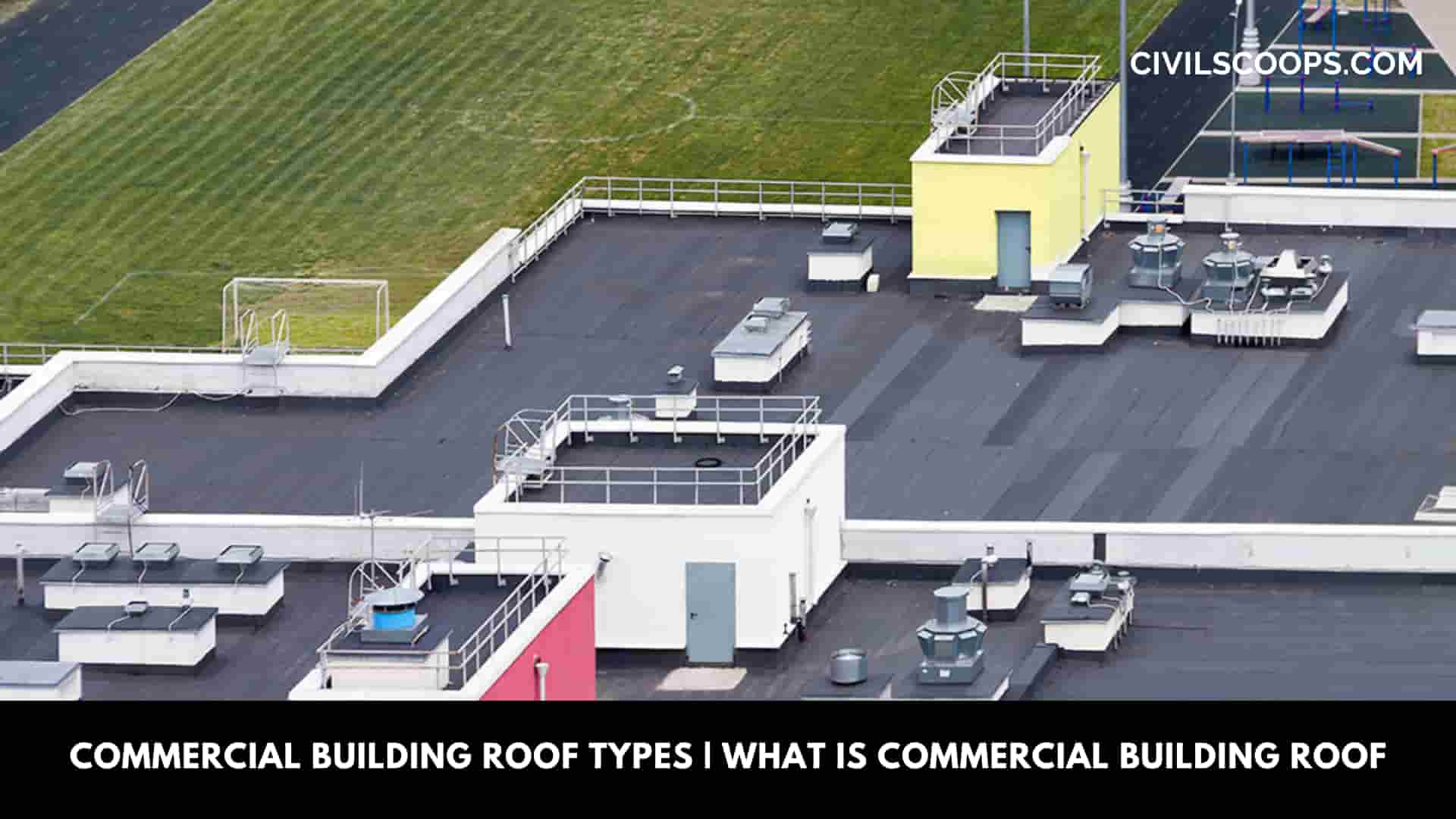
Table of Contents
What is Commercial Building Roof?
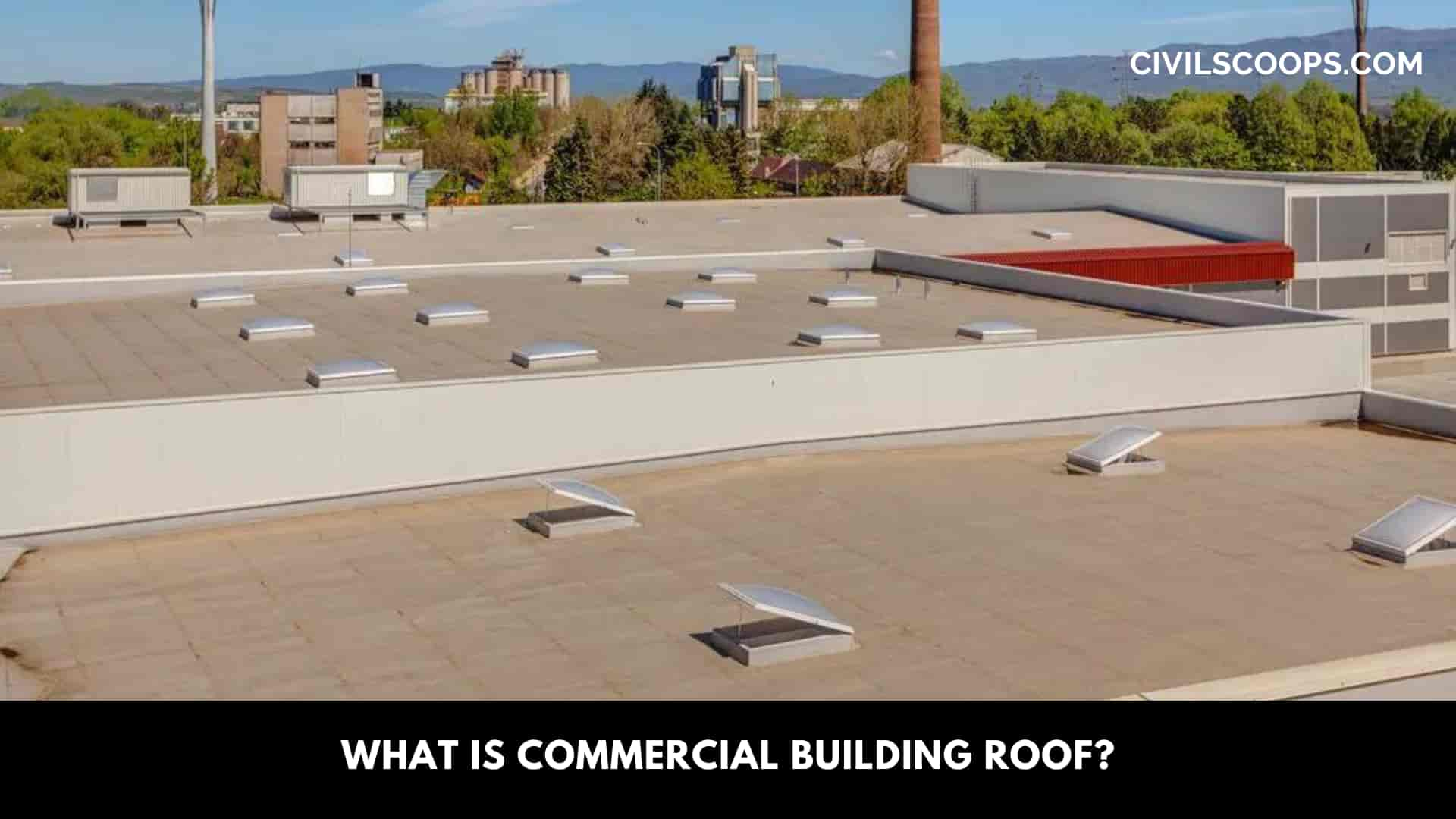
Commercial roofs are available in the marketplace in different types and different shapes according to the budget of the owner and the needs of the building.
Types of roofs and the durability of the roof play an important role in the health of your building and the longevity of the roof itself. The external weather condition, an environmental condition, also creates an impact on your roof.
For commercial purposes, we need to construct the roofs with slat or low slope roofs. There are generally different types available, and you can choose one of them according to the requirement of your house.
Commercial Building Roof Types

There are generally eight types of commercial roof types are available in the market, those areas the following.
- Metal Roofing
- Green Roofing
- Built-Up Roofing
- Spray-On Roofing
- Thermoplastic, PVC & TPO Roofing
- Thermoset EPDM Roofing
- Shingle Roofing
- Modified Roofing
1. Metal Roofing
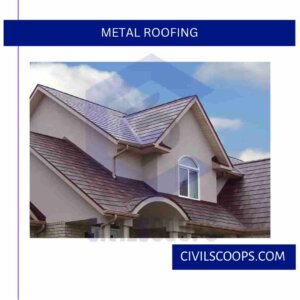
Metal has been one of the best roofing materials for the last 20 to 30 years. Metal is one of the strongest materials, and the durability of this material is also very high. Metal roofing is a very common type of roofing that is designed for a lifespan of 40 to 60 years.
There are many other types of roofing materials available in the marketplace, but still, the popularity of this material is very high because it has an integrated facility of snow and solar removing property.
In metal roofing, there are various types of materials used, those are- Aluminium, tin, and zinc; Corrugated galvanized steel; Copper; Tile sheets; Coated stainless steel; Lead, etc.
2. Green Roofing
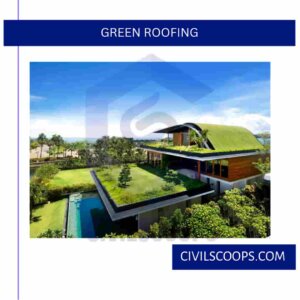
This is another type of roof type, which is widely used in commercial buildings. The average lifespan of a green roof is 30 to 50 years. In green roofing, it is covered by a tough waterproof membrane, and it consists of green plants.
Green roofing also improves the air quality of the surroundings, and it also provides some space for the employees. Green roofing has some advantages like it increases the government incentives, elements protection, possible utility, etc.
This type of roofing also has a good water drainage system and climate control capability. The only disadvantage of green roofing is it has a high maintenance cost.
3. Built-Up Roofing
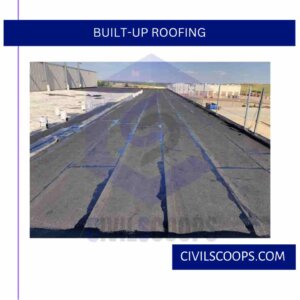
Built-up roofing is a type of roofing that is also highly used nowadays for commercial purposes. Built-up roofing has a lifespan of 20 years, and it will be increased if you take proper care.
Built-up roofing member is made with alternative layers of tar and gravel. Due to those layers, the durability of the built-up roofing membrane is also high, but the cost is not very high; it is affordable for everyone.
This type of roofing is one of the oldest types of roof which is used in modern days, and it is also a flexible type of roof. The built-up roof can also carry high loads, and it is also UV resistant, and it reflects heat.
The advantage of this type of roof the lifespan of this roof is very low with respect to other types of roofing, and it’s highly difficult to identify the leakage in the roofing.
4. Spray-On Roofing
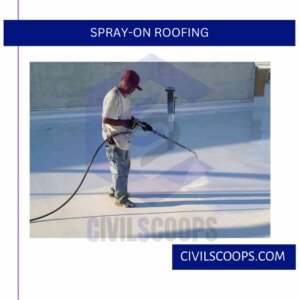
Spray-on roofing is basically a Spray Polyurethane Foam which is generally sprayed like foam at first, which hardens later & creates a solid layer. Spray-on roofing is eco-friendly roofing, and it has been used since the year from 1980.
Spray-on roofing has a good insulation property, and it has a lifespan of around 50 years. The one disadvantage of this type of roofing is you cannot install windows in the roofing.
The maintenance work of spray-on roofing is a little bit more, and it requires one or two maintenance work in a year.
5. Thermoplastic, Pvc & TPO Roofing
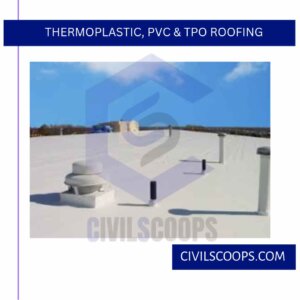
Thermoplastic, PVC & TPO Roofing is a modern type of roofing which is widely used in recent times. Thermoplastic, PVC & TPO Roofing can resist the adverse effect of weather, harsh environmental conditions, etc.
Thermoplastic, PVC & TPO Roofing is UV resistant, puncture-resistant, heat reflective type roofing, and it can also resist bacterial damage & it is very lightweight. This type of roofing can handle high wind load and high temperature.
The one disadvantage of this product is this roofing is available in many local sellers, and those products are very cheap, and leaks can be found; so, please try to avoid those products and purchase from trustable sellers.
6. Thermoset Epdm Roofing
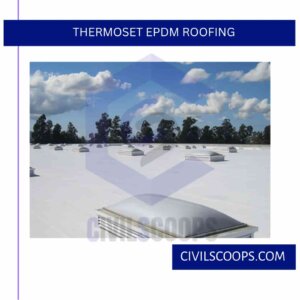
Thermoset EPDM Roofing is also a modern type of roofing which is very popular in recent times. Thermoset EPDM Roofing is basically a synthetic rubber-based membrane that is very durable and it is roll-based.
Thermoset EPDM Roofing is a good resistance to sunlight and weather pollution. This type of roofing is very easy to install; so, the installation cost is not very high.
Thermoset EPDM Roofing is available in white and black color, which is used for heat resistance and the rubber membrane is used to resist acids and alcohol.
7. Shingle Roofing
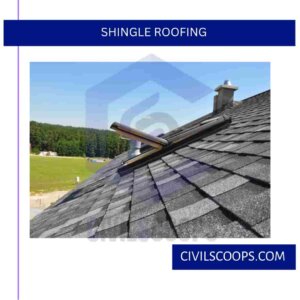
Shingle is a very popular roofing type material that is used in most commercial houses. Shingles are used in those places where the roofline is very steep.
Shingles are available in the market in various options like slate, plastic, asphalt, ceramic, etc. Shingles are very versatile and easy to install; that’s why the installation cost is also affordable for everyone.
The disadvantage of using shingles is the lifespan of this type of shingles is not so long, and there is a chance of moss attack if your house is located in the shaded area.
8. Modified Roofing
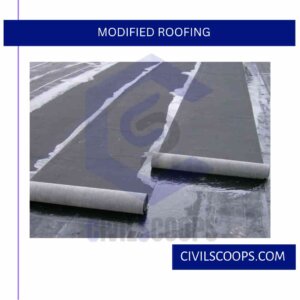
Modified roofing is basically an asphalt bitumen made ply that is installed on the roof. Modified roofing was developed in Europe in the time of 1960. In the time of producing modified roofing, sometimes we use polymers, reinforced fiberglass, and polymers.
This type of roofing has a good UV resistance power, is environmentally friendly, and is truly excellent in leak resistance. Modified roofing is easy to install, and maintenance and installation costs are also low.
The disadvantages of modified roofing are it has not a large lifespan, is quite low in leak resistance, and creates a flour odor smell.
[su_box title=”FAQ” style=”default” box_color=”#333333″ title_color=”#FFFFFF” radius=”3″ class=”” id=””]
What Is the Average Lifespan of a Shingle Roof?
High-quality architectural shingles have a life expectancy of 15 to 20 years. Conversely, 3-tab shingles are expected to last 10 to 12 years.
What Is Modified Bitumen?
Modified bitumen is thought of as the evolutionary cousin of the built-up roofing systems (BUR) that have been used on low-slope roofs for more than 100 years. It is made of asphalt combined with polymerized rubber or plastic, then reinforced with fiberglass to create a rugged-yet-flexible waterproof membrane.
How Much Is a Square of Shingles?
Shingle Roof Cost Per Material
Prices are based on a cost of around $30 to $35 per bundle of asphalt three-tab shingles or about $90 to $100 per square.
Thermoset Roof Membrane
Thermoset roof membrane is a type of synthetic rubber roofing often used to reinforce commercial structures. This coating is manufactured through a combination of ethylene and propylene materials. Professionals can develop thermoset roof membranes using multiple methods.
What Is Built Up Roofing?
Built-Up Roofing, or BUR for short, first appeared around the mid 1800’s. It is a roofing system where multiple layers of asphalt get applied between ply sheets (or felts) over the roof deck and insulation.
What Is a Foam Roof?
Foam Roofs are Lightweight, Durable, and Seamless
Foam roofing bonds around roof penetrations such as pipes, vents and edges forming an impenetrable wedge, leaving these penetrations “high and dry.” Additionally, the roof surface is built up in ponding areas to eliminate heavy standing water and improve drainage.
What Is Spray Foam Roofing?
Spray Polyurethane Foam is a liquid that is sprayed on the existing roof and expands into a foam, creating a solid layer across an existing roof. While SPF roofing is not the most known type of roofing material, the technology has been around since the early 1960s for industrial, commercial, and residential facilities.
What Is Thermoplastic Roofing?
Thermoplastic Polyolefin is a single-ply roofing membrane that is one of the fastest-growing commercial roofing systems on the market. TPO roofing systems are a single layer of synthetics and reinforcing scrim used to cover flat roofs.
What Is Tpo Material?
Thermoplastic polyolefins (TPO) are either. a mixture of an olefinic thermoplastic (e.g. PP) and a non-crosslinked elastomer (e.g. EPDM) or. an olefin copolymer with a soft and a hard segment.
What Is Tpo Rubber Roofing?
TPO (Thermoplastic Polyolefin) is a roofing material introduced in the early 90s. It is a single-ply roofing membrane composed of 3 layers (a TPO polymer base, a polyester-reinforced scrim, and a TPO compounded top ply).
What Is Pvc Roofing?
PVC roofing or polyvinyl chloride is a single-ply roofing solution used on commercial or industrial roofs that are flat or low sloped. PVC or polyvinyl chloride, is the third-most widely produced synthetic plastic polymer.
What Is Better Tpo or Pvc Roofing?
TPO presents superior results for tear and break strengths, while PVC outperforms in chemical resistance, fire resistance, and overall cost. Restaurants or buildings with grease traps on the roof would be better served by a PVC roofing system.
What Does Pvc Stand for in Roofing?
Polyvinyl Chloride (PVC) single-ply roofing membranes are among the most popular commercial roofing products available today. They’re remarkably durable and highly resistant to some of the toughest flat-roof aggressors like fire, chemicals, and hurricane-level winds.
What Is Modified Roofing?
It is made of asphalt combined with polymerized rubber or plastic, then reinforced with fiberglass to create a rugged-yet-flexible waterproof membrane. Modified bitumen roofing is primarily used on flat or low-slope commercial roofs.
[/su_box]
Like this post? Share it with your friends!
Suggested Read –
- Bolt Vs Screw | What Is Bolt | What Is Screws
- Load-Bearing Vs Partition Walls | What Are Walls | Classified of Walls
- Difference Between Rafter and Truss | What Is Rafter | What Is Truss
- All About Gabion Wall | What Is the Purpose of the Gabion Wall | Gabion Wall Construction
- All About Transportation of Concrete | What Is Transportation of Concrete | Methods for Transportation of Concrete
[/su_note]
Originally posted 2023-04-14 07:54:58.
